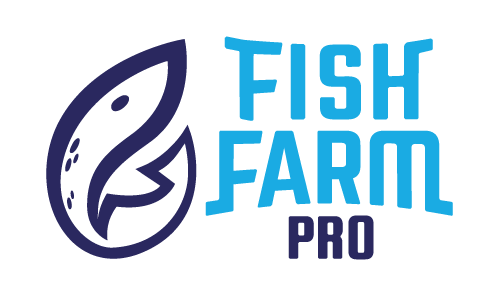Preparation of the ©Fish Farm Pro application for work
In everyday use, the application is very simple and intuitive. The graphic interface makes it easier to navigate the farm, daily sorting operations, sales, treatments, etc. The functionality of the program, however, is very extensive, making it an extremely useful and necessary tool in the hands of people managing farms.
Temperature groups
The application graphically reflects the farm. It is a virtual center where ponds are drawn with their numbering, proportions and shape. The system defined in this way is managed by the Feed List, which manages the entire biomass of the farm, presenting kg, pieces and averages of each pond, suggesting appropriate feeds, doses for the set water temperature and fish species.
Feed doses are calculated according to the species, size of fish in the pond and water temperature. Species may have several feeding programs within one feed list, which means separate types of feed, their sizes and rations. However, within one feed list, there can only be two temperature groups, which means two different feed rations for different temperature groups. This means that we can draw within one “virtual farm” two independent systems operating at different water temperatures.

One farm – several systems
What if there are several systems within one farm, such as hatchery, fry and growers pools? As described above, within one virtual farm (one Feed List), there may be two temperature groups. Theoretically, it is possible to draw two systems working in different thermals within one virtual farm and manage them together. The third system (third temperature group) in this case would have to be drawn as a second virtual farm. Then the application manages a group of farms, and the user switches between them and works on two independent feed lists. In this situation, you can also authorize two different users to manage each of their farms.
Independent farms – benefits
What is the effect of drawing one farm into several virtual farms (e.g. hatchery, fry, growers)?
First of all, the possibility of assigning users managing each of the virtual farms independently.
Quoting one of our clients: “Separate personally and programmatically from hatcheries and fry ponds from growers, it gives better control over the entire farming process. Thanks to separate settlements, the results are much more reliable and the forecasted increments are repeatable. This separation within one farm also means better control over people and the possibility of making them accountable for the generated increments”.
Our experience also suggests that systems such as hatchery, fry or growers have their own work rhythm, not necessarily consistent with each other. Processing them into one Feed List forces them to conscientiously coordinate the records of loses, feeding adjustments, sorting, etc., which is not always convenient and possible.


User permissions
The owner, manager of the center has administrative rights and he creates, grants permissions, enables and disables user accounts. We have several types of users in the application:
- administrator – full application management rights,
- auditor – a user with only access to the application and its data, no editing rights, no record keeping,
- user – a function that allows you to keep all records of the application.
Auditor and user rights can be granted to the entire group within one farm or be assigned to specific farms. Users, auditors of individual farms do not see other farms in the group, except for their own, to which they are granted rights.
What to start about
Fill out the form in the Access tab, write an e-mail or call us. Before starting the application, we will contact you, discuss everything and help you choose the best solution.
radek.galecki@fishfarm.pro | mobile: +48 602 657 131
Try the ©Fish Farm Pro application
Now free for the first month. Give us a chance to demonstrate our advantages and learn about a new, comfortable system for managing your farming.




